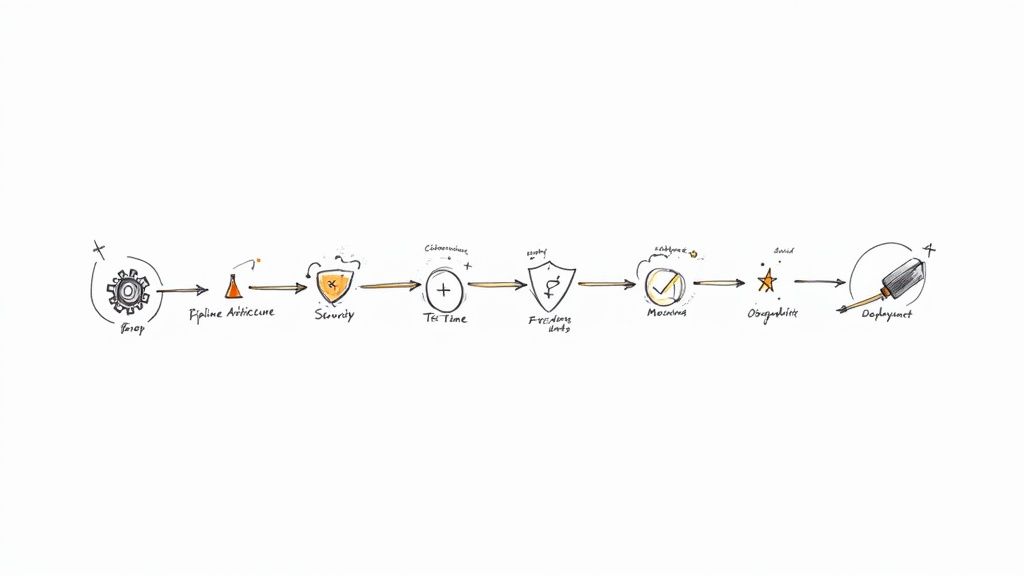Flaky Test Management: How to Handle Flakiness in your Test Suite?
Explore a comprehensive guide to mastering the art of handling flakiness with these proven best practices.

Flaky tests are automated tests that sometimes pass and sometimes fail without an obvious reason. This can be a major problem for software development teams, as it can make it difficult to determine whether a failure is due to a genuine bug or a flaky test.
Flaky Tests: Understand the Root Causes
Flaky tests can be caused by a variety of factors, such as:
- Race conditions: This occurs when two or more tests are trying to access the same resource at the same time.
- External dependencies: This occurs when a test depends on a third-party service or library that is not always available.
- Non-deterministic behavior: This occurs when the outcome of a test depends on factors that are difficult to control, such as the operating system, the hardware, or the environment.

Flaky tests can have a significant impact on the reliability of a software project. They can cause false positives, which can lead to developers wasting time investigating bugs that do not exist. They can also cause false negatives, which can allow bugs to slip into production.
How to Handle Your Flaky Tests
There are a few different ways to handle flakiness in your test suite:
🧑🔧 Fix the flaky tests
This is the best solution, but it can be the most difficult. It requires you to identify the root cause of the flakiness and then make changes to the test or the code being tested.
🔁 Retry the flaky tests
This can be done manually or automatically. Manually retrying flaky tests can be time-consuming, but it can be effective if the flakiness is caused by temporary factors, such as network latency or race conditions. Automatic test retry can be configured to retry flaky tests a certain number of times before giving up.
🏷️ Mark the flaky tests as ignored
This is a temporary solution that can be used while you are working on fixing the flaky tests. Ignored tests will not be run but will still be reported in the test results.
❌ Remove the flaky tests
This is a drastic solution that should only be used as a last resort. Removing flaky tests can make your test suite less reliable, but it can also reduce the number of false positives.
The best way to handle flakiness in your test suite will depend on the specific circumstances. If the flakiness is caused by a temporary factor, then retrying the tests may be sufficient. If the flakiness is caused by a more fundamental problem, then you will need to fix the flaky tests.
Additional Tips for Managing Flaky Tests
✅ Use a test runner that supports test retries. This will make it easier to retry flaky tests automatically.
✅ Monitor your test suite for flaky tests. This will help you to identify flaky tests so that you can take steps to fix them.
✅ Use a flakiness dashboard to visualize the flakiness of your tests. This can help you identify the most flaky tests and prioritize them for fixing.
✅ Use a flakiness prediction tool to identify tests that are likely to be flaky, like Mergify CI Monitoring. This can help you focus your efforts on the most important tests to fix.
✅ Use a test framework that supports isolation. This will help to prevent flaky tests from affecting other tests.
✅ Use a test data management system to ensure that your tests are always using the same data. This can help to reduce flakiness caused by data corruption or race conditions.
✅ Use a continuous integration server to run your tests automatically. This will help you to identify flaky tests early on, before they cause problems in production.
By following these tips, you can help to reduce the flakiness of your tests suite and improve the reliability of your software.
Make your Flaky Tests Frictionless with CI Monitoring
As you've just read, it's important to be properly equipped to manage your flaky tests.
While you can rely on a number of different tools to detect, relaunch, or even repair your flaky tests, there's one that combines all these advantageous features. It can only be CI Monitoring by Mergify, of course.
CI Monitoring integrates an AI capable of analyzing your test suite from a portion of your logs, dividing them into different classes (4 in all). Among these is the flaky test class.
Once identified, CI Monitoring will automatically rerun your failed flaky tests. This saves you monitoring and manual intervention.
Finally, CI Monitoring also gives you tips and advice on how to repair your flaky tests and rid your test suite of all flakiness for good.
To all developers out there who will face or are currently facing flaky tests in their journey: Good luck! May your code be clean, your tests be reliable, and your debug sessions be short. Remember, every challenge is an opportunity to learn and grow. Keep going! ❤️





